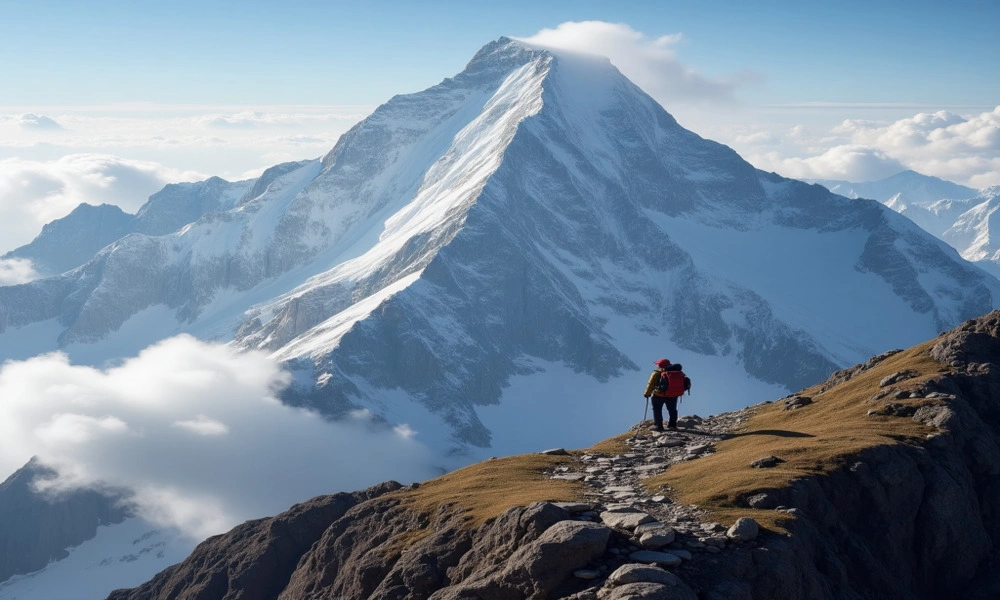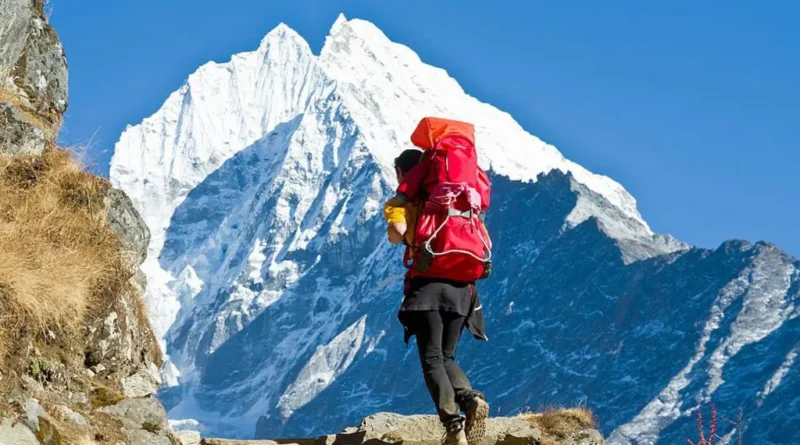Nepal to Waive Climbing Fees for 97 Himalayan Peaks in Bid to Boost Tourism
In a significant step to draw global mountaineers away from the crowded slopes of Mount Everest and toward lesser-known but equally breathtaking peaks, Nepal has announced that it will waive climbing permit fees for 97 peaks in the remote northwestern Himalayas. The initiative, set to run for the next two years, is aimed at boosting tourism in the country’s Karnali and Sudurpaschim provinces — areas that, while rich in natural beauty, remain among the least explored and least developed in Nepal.

These two provinces, located near the border with China, are home to stunning landscapes and pristine peaks ranging from 5,870 meters (19,258 feet) to 7,132 meters (23,398 feet). Yet, due to their remoteness and lack of infrastructure, they have historically attracted very few climbers. Officials hope that by removing the permit costs, they can encourage more mountaineers to explore these hidden gems.
Encouraging Exploration Beyond Everest
“The idea is to encourage climbers to go to unexplored yet scenic areas and mountain peaks,” explained Himal Gautam, director of Nepal’s Tourism Department, in an interview with Reuters.
It’s a calculated move. In the past two years, only 68 climbers have attempted these remote peaks — a stark contrast to the 421 permits issued for Mount Everest in 2024 alone. By offering free access, authorities hope to redistribute mountaineering interest across the country and reduce the environmental and logistical pressures on Everest, which has faced increasing criticism for overcrowding and the waste problem left by climbers.
Economic Boost for Local Communities
For the far-western regions of Karnali and Sudurpaschim, tourism could be transformative. These provinces have some of the highest poverty rates in Nepal, and much of the local economy depends on subsistence agriculture. Mountain tourism has the potential to create jobs for guides, porters, lodge owners, and transport operators.
Gautam believes the fee waiver could play a key role in stimulating local economies:
“Despite their breathtaking beauty, the number of tourists and mountaineers here is very low as access is so difficult. We hope the new provision will help.”
With more climbers venturing into these areas, the demand for accommodation, food, and local services could rise significantly. If managed properly, this growth could improve livelihoods while also encouraging investment in much-needed infrastructure.
Balancing Opportunities with Challenges
However, officials also recognize that increased footfall brings challenges. The lack of proper roads, healthcare facilities, and rescue infrastructure in these provinces poses real concerns. For mountaineers, the remoteness of the peaks means that emergencies could be difficult to handle.
Moreover, while tourism can inject money into local economies, sudden increases in visitors can put pressure on fragile mountain ecosystems. Authorities will need to ensure that waste management, sustainable trekking practices, and environmental preservation remain at the forefront of this initiative.
Shifting Mountaineering Trends
The move to promote lesser-known peaks also comes at a time when Nepal is adjusting its approach to mountaineering tourism more broadly. Starting in September, climbing permit fees for Mount Everest will rise from $11,000 to $15,000 during peak season, while permits for smaller mountains will go from $250 to $350.
These changes are part of an effort to manage overcrowding on Everest and to ensure that climbing revenue is better aligned with the cost of maintaining safety and environmental standards. Last year alone, Nepal generated $5.9 million in climbing fees, with Everest accounting for more than three-quarters of that amount.
Everest Under Pressure
Mount Everest has long been the crown jewel of Nepal’s mountaineering industry. But the mountain has also become a victim of its own success. In recent years, images of long queues at the summit ridge and reports of litter and human waste have sparked debate about how many climbers the peak can realistically handle each season.
In April 2024, Nepal’s Supreme Court ordered the government to limit the number of climbing permits issued for Everest and other major peaks, citing the need to protect these environments from overuse. A proposed law would also require climbers attempting Everest to first scale a mountain over 7,000 meters within Nepal — a move that could make these newly free-to-climb peaks ideal training grounds for aspiring Everest summiteers.
A Strategic Tourism Shift
The free permit policy for 97 peaks could be seen as a win-win solution: it eases pressure on Everest while opening up economic opportunities in neglected areas. If climbers begin to view the Karnali and Sudurpaschim provinces as exciting alternatives, Nepal could establish new routes and destinations that spread tourism revenue more evenly across the country.
It’s also a chance to showcase the diversity of Nepal’s Himalayan offerings. While Everest will always be the ultimate draw, peaks in the far west offer solitude, unspoiled landscapes, and cultural experiences that are becoming increasingly rare in the age of commercial mountaineering.
Infrastructure Needs and the Road Ahead
For this plan to succeed, Nepal will need to address its infrastructure gaps. Better road connectivity, reliable communication systems, and emergency response facilities are critical. Without these, climbers may still opt for the more established trekking and climbing areas in central and eastern Nepal, even if fees there are higher.
There is also the question of promotion. Many of the peaks in the free permit list are virtually unknown internationally. To attract climbers from around the world, Nepal will need to invest in marketing, create detailed climbing guides, and partner with international expedition companies.
Global Mountaineering Community Response
While it’s too early to gauge the full response from the global climbing community, the initial reaction has been positive. Many climbers welcome the opportunity to explore less crowded routes and to contribute to the development of communities that rarely benefit from tourism.
However, some experts caution that safety standards and environmental regulations must be applied consistently across all peaks — not just the famous ones. Without this, the influx of climbers could lead to accidents, environmental degradation, or cultural disruption in sensitive areas.
Climbing Into a New Era for Nepal’s Tourism
Nepal’s decision to waive climbing permit fees for 97 remote Himalayan peaks is a bold experiment in reshaping its tourism landscape. By opening up the underexplored Karnali and Sudurpaschim regions, the government is taking a calculated risk that could bring both economic rewards and new challenges.
If implemented with careful planning, infrastructure investment, and environmental safeguards, this policy could diversify Nepal’s mountaineering appeal, ease the strain on Everest, and offer the world a glimpse into some of the last truly wild places in the Himalayas.
Follow us for more news at Valleynewz.com

